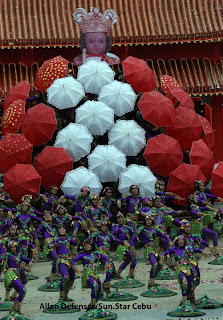Our three of four stops in Vigan City were Bantay Bell Tower, Baluarte and Grandpa's Inn.
Vigan is the hometown of the 6th Philippine president, Elpidio Quirino, born in 1890 (and if the calesa or horse-drawn-carriage driver is to be believed) inside the provincial jail where his father was working as a warden.
Vigan is also home to Fr. Jose Burgos, one of three priests martyred during the Spanish era, due to charges of mutiny in 1872. The three priests were collectively known as GOMBURZA: Gomez, Burgos and Zamora.
The main church in Vigan is St. Paul's Metropolitan Cathedral: above the church doorway is an alcove depicting the conversion of St. Paul. Unfortunately, due to politics, the church is tainted with the blood of a politician who was gunned down inside the cathedral.
Historic Town of Vigan (Destination 4 of 4)
UNESCO World Heritage Site
"Established in the 16th century, Vigan is the best-preserved example of a planned Spanish colonial town in Asia. Its architecture reflects the coming together of cultural elements from elsewhere in the Philippines, from China and from Europe, resulting in a culture and townscape that have no parallel anywhere in East and South-East Asia." (UNESCO)
This "town" is reminiscent of Spanish times and is perfect for time travel adventures. The streets have brick tiles, structures are made of wood and antique shops, selling antique wares and souvenirs, line the streets. Some parts are still well-preserved, while maintenance in other parts are somewhat lacking and will have to be improved to continue the preservation of a heritage. There is no other part of the country like this...old, peaceful, simple, quaint, inspiring and charming.
 |
| Calle Crisologo |
 |
| Antique Shop |
Part 1 of the Ilocos Sur trip can be read here.
COSTS TO VISIT VIGAN
In Vigan City, the tourist spots are free of charge. One only needs to spend for transportation, food and accommodation.
For transportation, one can go around the tourist places on calesas or horse-drawn carriages for USD3.50 per hour or ride any public vehicle like tricycles or ride a rented van.
For sumptuous Ilocano food, average cost of meals range from USD10-20 per person.
For accommodation, a night would cost around USD50 a night for double occupancy.
Fall in love with Vigan...















































